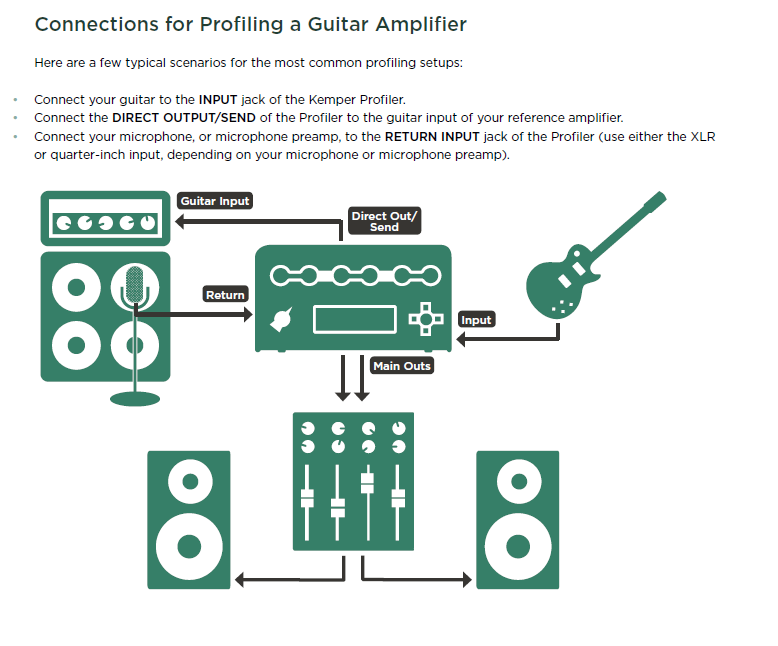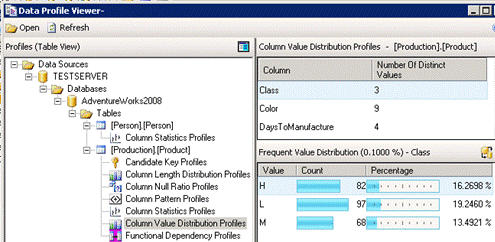You don’t have an Instagram account? Or you got blocked? View any public account on Instagram without login via the private Instagram viewer. Forget about creating a fake Instagram account – type any IG nickname you want in the field below:
TWO MORE UNIQUE & USEFUL TOOLS FOR INSTAGRAM
Instagram story viewer and stalker online - View profiles, stories, followers, tagged posts anonymously Watch IG with the best experience. To view the data profiles that the Data Profiling task computes, you send the output to a file, and then you use the Data Profile Viewer. This viewer is a stand-alone utility that displays the profile output in both summary and detail format with optional drilldown capability. For more information: Data Profile Viewer. Profile Viewer With BestWhozi you will be able to see all private Instagram accounts. In order to view private profiles login now. Reach out of the all private profiles. To view the data profiles, you configure the Data Profiling task to send its output to a file, and then you use the stand-alone Data Profile Viewer. To open the Data Profile Viewer, do one of the following. Right-click the Data Profiling task in the SSIS Designer, and then click Edit. Click Open Profile Viewer on the General page of the Data Profiling Task Editor. In the folder,:Program Files (x86) Program. Profile Viewer: Who Viewed My Profile? Is a simple and fast app which get your profile and gives you list of profile visitors - who visited your profile and when. Download Profile Viewer today.

What is a stalker for Instagram?
An Instagram stalker, or private viewer, lets you discover profiles on Instagram without login. This service is online so no additional downloads are needed. You can search any public account you are interested in by typing it in the search bar.
If you wonder whether you can view someone’s Instagram without an account, you have come to the right website. Usually, when you get a link to an Insta post and you tap on it, you first need to sign up. But this Instagram web viewer is what you need if you don’t have an Insta account but want to see someone’s posts.
How to use the online viewer for Instagram
The Ingramer tool is as simple as ABC. You will only need the username of an Instagrammer you want to spy on.
- Go to the profile you want to view anonymously.
- Copy the nickname.
- Paste the nickname into the search field on this page.
- Click the Search button.
- Enjoy the content you wanted to see.
What are the benefits of using this private viewer for Instagram?
Starting this year, Instagram made it impossible to view the profiles of its users without login. By doing this, the company aims to attract more new users to the platform. Nevertheless, this tool will be beneficial if you want to stay anonymous and limit your presence on social media. Embrace the benefits the Ingramer private viewer offers you absolutely free:

- You can view the content of users who blocked you. If a person puts you on the IG blacklist, you can still view new posts and Stories anonymously without login.
- You can delete your profile without hesitation. Are you tired of Instagram but the only thing that stops you from removing your profile is the access to your friends and influencers’ new posts? You can monitor their updates without an IG account – simply insert their nicknames in the search filed once a week.
- You can stay anonymous. There is no need to create a fake account if you want to see someone’s content privately. Also, you don’t need to log in if you use a VPN. The Instagram viewer is a perfect solution for those who struggle for anonymity.
Can I use a private viewer for Instagram from mobile?
Yes, our robust Instagram viewer is compatible with any device. You can watch what you like from a phone, tablet, or computer.
Are there any limits on the number of profiles I can view privately?
Our service is free and unlimited. This means you can enjoy Instagram posts of millions of users without signing up.
Can I also view Instagram stories anonymously with the Instagram stalker?
Instaviewer will show you only the feed posts of any user. If you want to see their Stories, highlights, or IGTV without revealing your name or without an IG account, we have a lot of services for these needs. Check the Ingramer Story Viewer and Ingramer Downloaders – these tools will let you not only browse content but also save it on your device.
GamutvisionTM is a color gamut viewer and much more. It is a powerful tool for learning color management, exploring its functions, and proofing color workflows. With Gamutvision you can
| – | View gamuts of color spaces, displays, and printers. |
| |||||||||||
| – | Visualize gamut mappings and rendering intents. | ||||||||||||
| – | View color response for ANYsaturation and lightness level, not just the gamut surface. | ||||||||||||
| – | Evaluate ICC profile quality. | ||||||||||||
| – | Preview printer, paper, and photo lab performance using downloaded profiles. | ||||||||||||
| – | Analyze the performance of your printer using scanned test prints. | ||||||||||||
| – | See precisely how image colors will change when printed. | ||||||||||||
| Gamutvision was developed by Imatest LLC in early 2006. In mid-2016 it was released as a free program with no purchase or registration required. The reasons: The 11-year old ICCTrans routine is not supported and only works with 32-bit Matlab (though its source code is available on Github). Current Matlab versions are 64-bit-only. Registration did not work with Windows 10 and worked poorly with offline computers. We are focusing our resources on the enhancement of the Imatest image quality analysis program. |

Gamutvision illustration A 3D L*a*b* Gamutvision display showing the color gamuts of
This is one of several Gamutvision displays. It can be zoomed and rotated (manually or automatically), and Saturation S can be reduced to display the gamut interior. The L*a*b* gamut volume is optionally displayed on the lower-right. To learn more about Gamutvision, take the tour. |
You can download an evaluation version that allows up to 20 ICC profiles to be analyzed. Online purchase and registration is available. The purchase price includes one year of upgrades.
Gamutvision operates under Windows* 2000, 2003, XP, Vista or Windows 7 and on Macintosh systems with Virtual PC 6 or 7. Minimum RAM is 256 MB; minimum screen size is 1024x768. (*Not supported on Windows 98SE and ME, but may work on some installations.)
|
The Gamutvision window
The image below illustrates the Gamutvision window. It has been reduced slightly.
The selected input and output color spaces and rendering intent are highlighted on the lower left. Explanatory tooltips appear when the cursor is moved over buttons or controls.
The large image on the left contains the primary Gamutvision output: the 2D a*b* saturation plot of the input gamut (dashed lines) and mapped output gamut (solid lines) is shown. Additional displays, such as the 3D L*a*b* gamut plot shown near the top of this page, can be selected.
The small image on the upper-right contains the input or output test image, either in its original form or mapped ( or ) to the monitor color space (usually similar to sRGB).You can use this image to compare colors of the original and the transformed images.
The above plot shows the gamut for the Adobe RGB (1998) color space (the input profile) mapped with Perceptual rendering intent to SPR2400 PremLuster BstPhoto.icc (an ICC profile for Epson R2400, Premium Luster). The gamut achieved when mapping from Adobe RGB is distinctly better than sRGB but somewhat smaller than the full printer gamut. These results can be compared with a scanned print. Despite the R2400's evident weakness in the greens, blues, and magentas, it is state-of-the-art for pigment-based printers in 2006. A comparison with the Epson 2200 (the previous generation) shows little change in color gamut and a modest increase of 0.13 in Dmax (the maximum printable density).
The plot below shows the 3D L*a*b* results of this gamut mapping for an actual image. The circles represent colors in the image file. The ends of the lines are the printed colors.The ends are somewhat obscured by the semitranparent wireframe display of the (mapped) output color space. This display can be made transparent. opaque, or it can be turned off. It can also be rotated and zoomed.
Profile Views Roblox
| Gamutvision instructions |
| Installing Gamutvision | Using Gamutvision — essential instructions: getting started | Gamutvision displays |
| Image color analysis with Gamutvision |
| Gamutvision examples and tutorials These pages, which illustrate a few of Gamutvision's many uses, make excellent tutorial material. They will help you to get the most out of Gamutvision. |
| Identifying defective profiles — illustrates a popular profile with a glaring defect and points to a solution. |
| Evaluating printer profiles with Round trip — illustrates Gamutvision's Round trip rendering intent. |
| Profile mystery: The case of the smudged pines — sheds light on a profile defect that smudges a print of pine trees. |
| Black Point Compensation — shows the meaning of the mysterious checkbox. |
| Camera and scanner profiles — shows what happens when you convert to standard color spaces. |
| Printer gamuts: total and real — shows the difference between a printer's theoretical (i.e., maximum) color gamut and the real color gamut achieved when working with standard color spaces. |
Gamutvision uses ICCTrans, the Matlab interface to the LittleCMS color management system. The ICCTrans source code is on Github. The ICCTrans manual may have disappeared from the Internet, so we've put it on the Gamutvision website. Many thanks to Ignacio Ruiz de Conejo and Marti Maria (of Hewlett-Packard Spain) for their outstanding work.
Data Profiling Viewer
